How to design a flyer: the ultimate guide
What do you do when someone hands you a flyer on the street or when you find one hidden among the bills and papers in the mail? Do you read it with eager anticipation? Or do you throw it away without giving it a second glance? Really, when was the last time you got a flyer that you actually paid attention to?
Thinking about what catches your own attention is a great place to start when designing a flyer. A lot of companies get this wrong and their flyers are relegated to the recycling bin. To ensure that your flyers actually make an impact follow our comprehensive guide to flyer design. We’ll take you from strategy and concept right through to printing and distribution.
Outlining your flyer strategy
—
It can be tempting to jump straight into designing the flyer, whether it’s a DIY project or a brief for a professional designer. If you want your flyer to play an effective role in your marketing campaign, you need to know what exactly that role is going to be! So, before you launch yourself into the design process, make sure that you take the time to do some proper prep work on the strategy behind it.
1. What’s your overall objective for your marketing campaign?
Before you even get to the flyer, the bigger question is: What are you trying to achieve in your business right now? What results are you looking to get from your marketing activities? Are you trying to build awareness of a new brand? Promote the launch of a new product? Increase engagement? Collect leads? You need to isolate your overall objective before determining if a flyer is the right tool to support that objective.
2. What role does this flyer play in your marketing campaign?
Once you have your clear objectives for marketing as a whole, you can set the specific objective for the flyer. Flyers are a low-cost and targeted marketing tool that can be especially effective in promoting a local business or event and driving footfall to a specific location. How will your flyers support your overall marketing objective and fit in with the rest of the activities you’re running? What’s the specific benefit of using flyers versus some other tactic?
3. Who is your target audience?
As with everything you do in marketing, you need to know who you’re speaking to in the first place. This includes demographics—age, gender, location, etc.—as well as psychographics—thoughts, attitudes and behaviors. Are you targeting people who have never heard of you or are you trying to win back past customers? Are you trying to attract customers away from a competitor? Who is the person who will most urgently benefit from what you have to offer?

4. What is the key message?
Now that you have your target audience, what’s the one key message you want them to take away from seeing the flyer? What do you want them to be thinking, feeling or doing? What should they remember about your brand or product? What’s the one benefit or attribute you want them to be associating you with? You may have a lot more information printed on the flyer in the end but you need to be super specific about that one important message.
5. What action do you want them to take as a result of the flyer?
You also want to be super specific about what you want the person to do after reading the flyer. For example, do they need to sign up online or come to the store on a certain date? Even if your objective is driving awareness, you’ll still want to be clear on a specific action that the reader can take as a next step.
It may just be visiting your website for more information or following you on social media—just make it super easy for the reader to know what to do next.
6. How and where will the flyer be distributed?
Flyers can be handed out in person on the street, pinned onto bulletin boards or sent through the mail. They can also be distributed electronically. Think about how you’re going to be distributing yours and bear that in mind for the design of the flyer itself. For example, a small flyer posted on a wall somewhere might need to be bigger and bolder to catch people’s attention in the first place, while a flyer handed to someone in person can afford to have more information in a smaller font size.
Constructing your flyer design concept
—
OK, you’ve got the strategy, but there’s still another step before you start designing! Now you need to get more specific in terms of the style and content of the flyer. Once you do that, the design itself will be easy-peasy.
1. What colors do you want to use?

Bold and bright colors will attract people’s attention but the design also needs to work with your brand, your industry and your target audience.
What are the colors that will reinforce your message? For example, greens and yellows for health and wellbeing or bright primary colors for children. Do you want it to be super vibrant and colorful or keep things simple and sleek with two or three colors? Could it work in black and w
hite (an especially important question if you’re on a tight budget)?
2. Which brand identity elements need to be highlighted?
Whatever your message on the flyer, you need to make sure the reader knows who it’s coming from. What are the elements of your brand identity that will ensure that people remember who you are and what you do? What absolutely needs to be on the flyer—your logo, your tagline and your website URL? What about the typography—do you have a brand font? Do you have a brand mascot or other imagery that makes you instantly recognizable?
3. What kind of imagery do you want to include?
Speaking of imagery, what kind of style are you going for? High-quality photography can be really effective in drawing people in—do you have your own or are you open to using stock photos? What about other kinds of images? Could it be appropriate to use graphics or icons, or maybe even cartoons or drawings? As before, think about your brand, your industry and your target audience when making these decisions.
4. What copy do you want and in what priority?
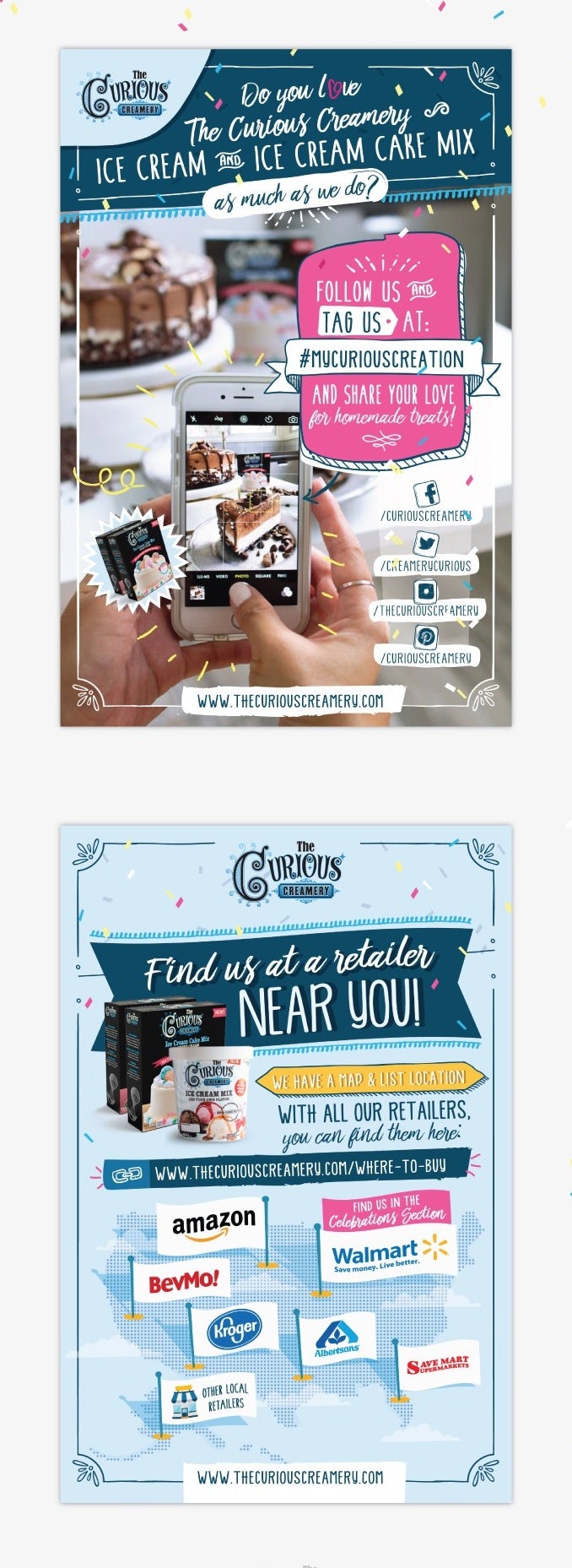
Now it’s time to determine the exact text that will be on the flyer. Remember the key message you identified earlier and make sure that it’s clear that this is the primary message. Next, decide what other information needs to be on the flyer and in what order it should appear. Can anything be left out if there isn’t enough space?
5. What’s the call to action?
Within the message hierarchy, you need to be super clear on that call to action that you identified in your strategy. What’s the next step you want people to take and what information do they need—social media profile, website URL, or something else—to be able to take that action? Make it super straightforward so that there’s no guesswork involved.
6. Does the flyer need to be a certain size or shape?
Flyers tend to come in some pretty standard formats—often, they’re A5. Do you want to stick with the standard shape and size or do you want something that stands out? If it’s a luxury product and you have a lot of information to convey, maybe you need more of a brochure format in a large size? Can you think of a creative format that gets people interacting with it—even if it’s just folding and unfolding—or using it after they get it?
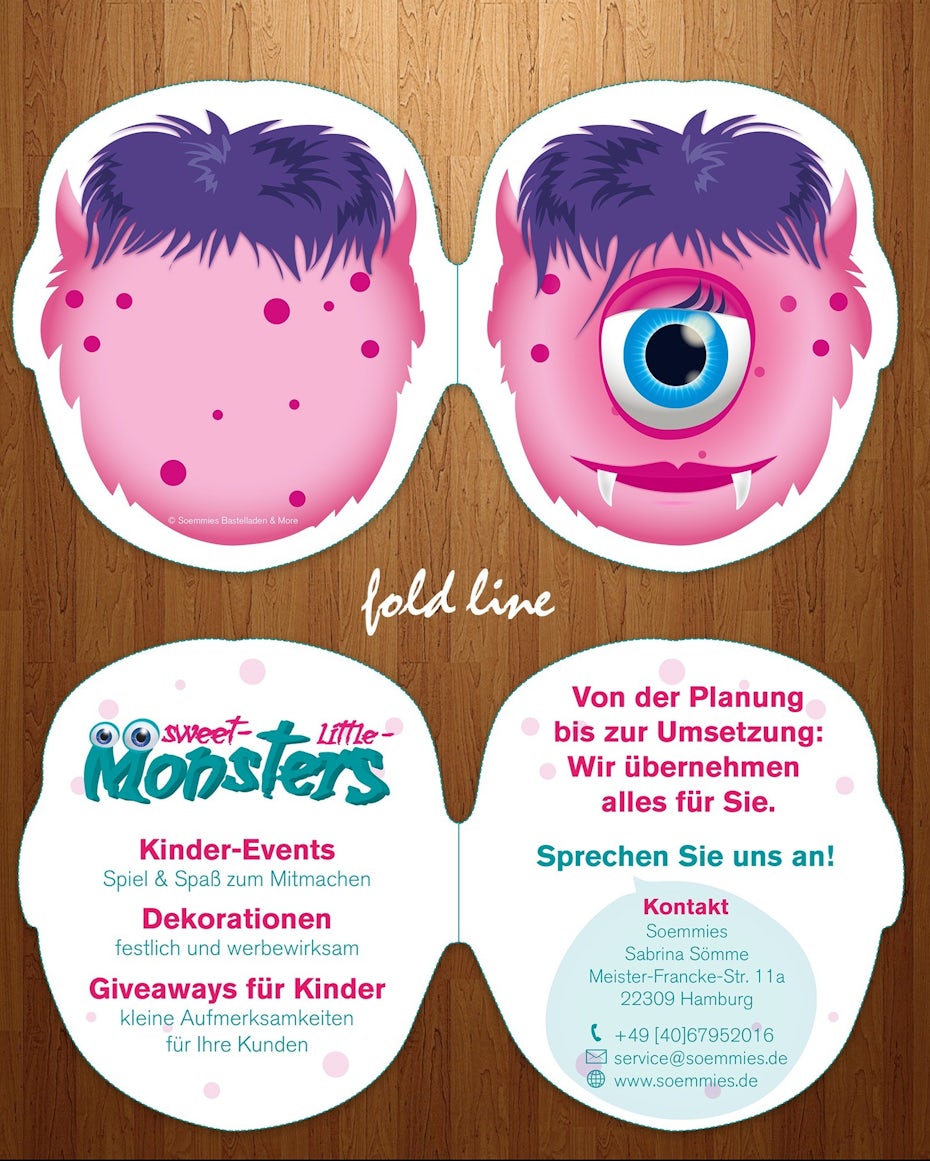
With any luck, kids will want to play with this little monster and the parents might just keep it around. Flyer design by tadaam.
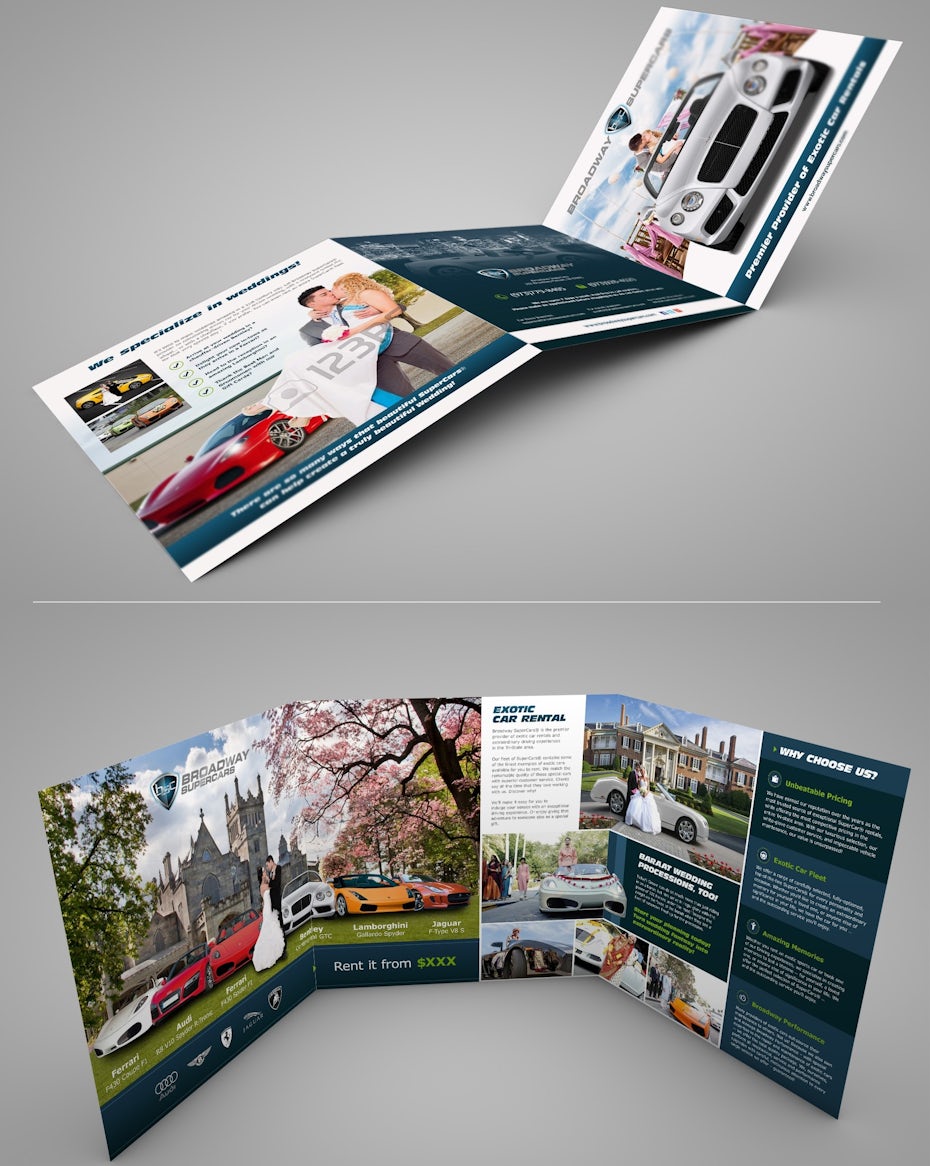
If your brand and your budget warrants it, you might want to consider a more comprehensive design. Flyer design by Adwindesign for Broadway Supercars.
Designing your flyers
—
Now that you have your strategy and concept for the flyer, you can go ahead with the actual design.
1. Find other flyers you like as inspiration
To get an idea for what’s possible, look at other flyers that are out there. Start collecting flyers when you get them and see what you like and don’t like. Browse existing designs online to see what styles appeal to you.
2. Use your design concept as a brief for a freelancer or design contest
Whoop whoop! You now have everything you need for a clear and effective brief. To move ahead with the design process, you can either choose your favorite freelancer to design your flyer for you or start a flyer design contest and get a range of different flyer design ideas from designers around the world.
3. Evaluate the design proposals against your criteria
As the designs start coming in, make sure you’re checking them against your brief and what exactly you’re looking for. Is the branding clear? Does it contain all the pertinent information? Is the hierarchy of the messages correct? Sticking to these objective criteria will help you sort through the designs without getting carried away by some artistic creation that doesn’t actually do what you need it to do.
4. Choose your final design
An effective flyer design attracts the right audience, communicates a clear message and benefit and inspires the audience to take a specific action. You can use a survey as part of your design contest to collect real feedback from people in your target audience. Choose the design that fits your criteria and works best for your audience.
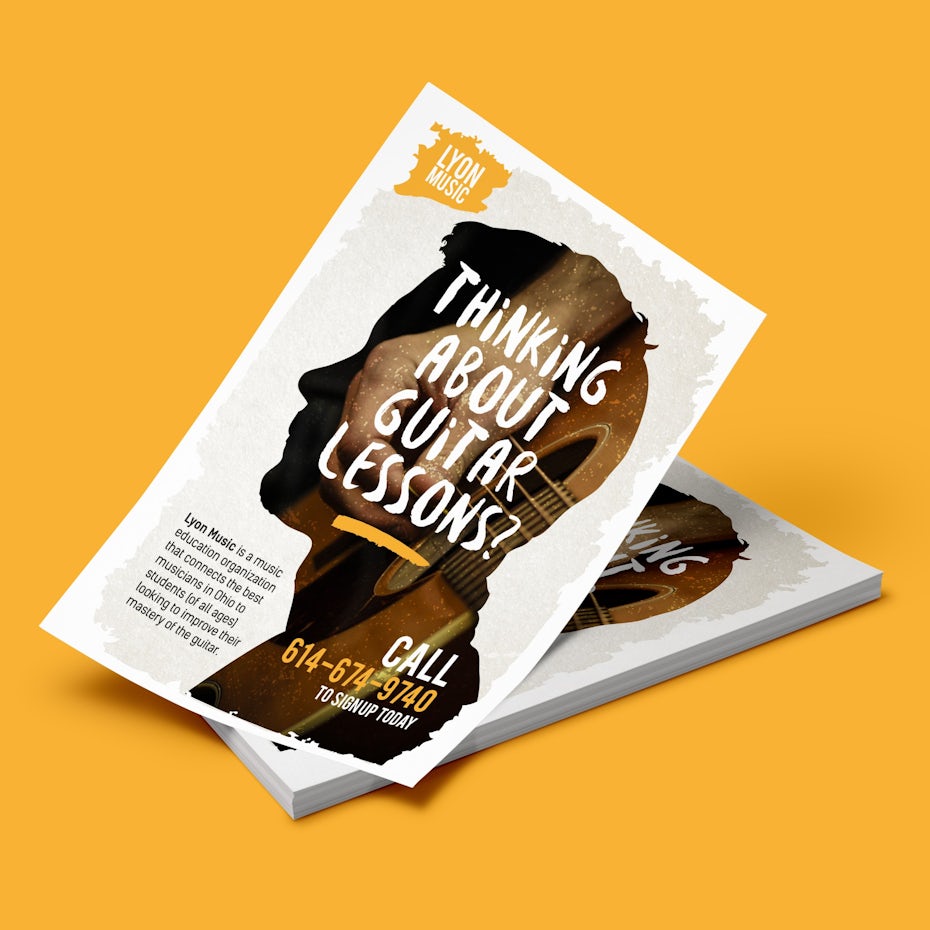
5. Proofread
When you get the final design, check and check again that there are no typos. Get someone else to look at it, someone who isn’t as deep into the project as you are. Make sure all the information is there—you’d be surprised how many times you get a flyer design that’s missing the date of the event (duh!), or the website URL. You don’t want all your hard work to be ruined by such an obvious but critical error.
6. Make sure you get the files you need
You’ll be looking at your flyer designs on screen in RGB online but you’ll need CMYK to print so make sure you get those converted files. If you have photos as part of the design, they need to be high resolution. For printing you’ll want a resolution of at least 300 dpi. If your design goes to the edges of the paper (there’s no literal white space around it), make sure that the designer has included a bleed, which is a little bit of extra design outside your desired size to account for printing and cutting errors.
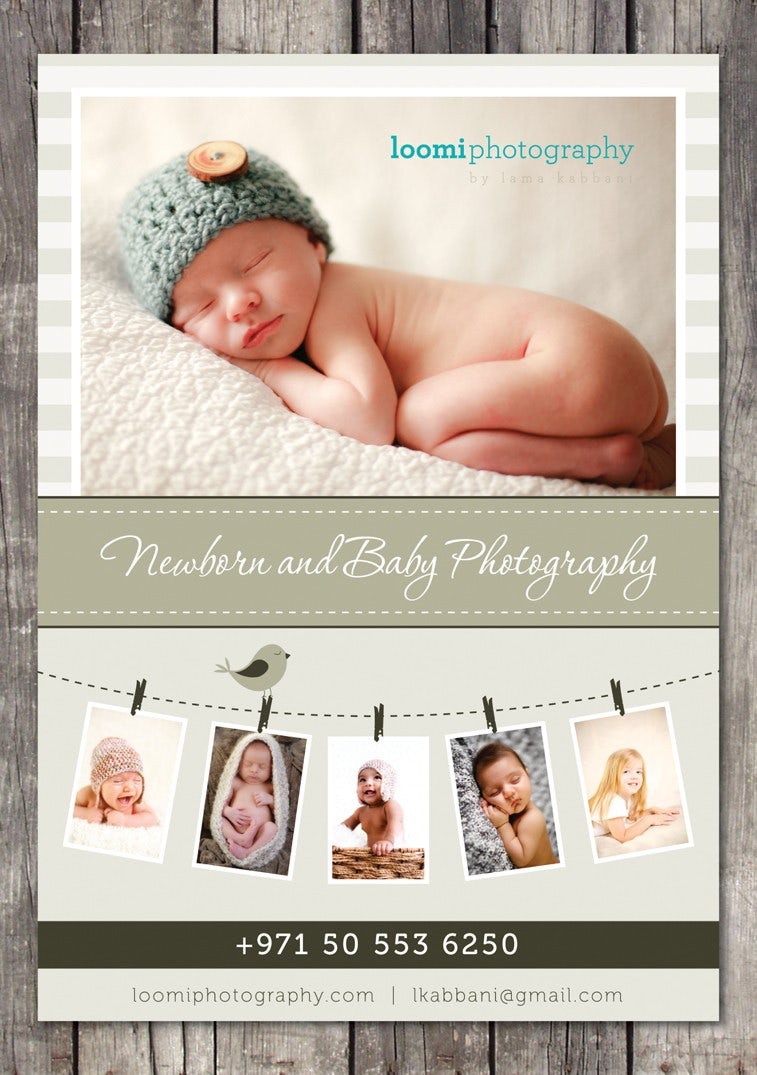
Printing and distributing your flyers
—
This is when your flyer really comes to life and you get it out there in front of your audience.
1. Find a printer
When choosing where to print your flyers, you’ll want to consider price, quality, type of printing and time.
Digital printers usually offer a quicker turn around time, and are great for smaller runs with full-color needs. They can get a bit pricey if you’re looking for larger quantities. Offset printing usually requires a minimum of several hundred pieces, but has flexibility in terms of number of colors (if you’re not doing a full-color print run you can save money). It usually has a longer setup time. If you’re doing a large print run (1,000+ pieces) it’s almost definitely the best option for you, even if you need pay for a rush order.
There may be a compromise to be made—it’s unlikely you’ll find the best quality for a rush job at a lower price! Consider location too if you need to be able to pick the flyers up yourself and don’t have time for a delivery.
2. Choose the quality and texture of the paper itself
What thickness of paper do you want? Do you want something more like a postcard or are you happy with a flimsy leaflet? Matte or glossy? Does it need to be folded? Get some samples from the printer to see what the options are. Again, there may need to be a compromise here depending on your budget.
3. Decide on the number of copies
Obviously, price per flyer will decrease as the total number increases—but you don’t want to waste money printing more copies than you need and have them all end up in the bin. If it’s a time-sensitive event or a seasonal offer that you’re promoting you won’t be able to reuse them, so plan accordingly.
4. Consider a test print
Ideally, you’ll get to see a test print before the full order is printed. Things look different on paper than they do online so this way, you can really check the final product, see the quality of the pictures and colors, make sure the copy is legible in the actual size and proofread it one more time!
5. Physical distribution
The flyer process doesn’t end at the printing stage—that’s really only the beginning! Now is your chance to make sure that all your hard work pays off. How are you going to get these stunning creations into the right people’s hands? How will you maximize the chances of the flyers being seen, read and acted on? Make sure you’re going to the right places and reaching the right people.
6. Digital distribution
Finally, don’t forget that you can get even more mileage out of these suckers by using them online too. Consider sending them as pdfs to your email list and posting them on social media to reach even more people at no extra cost.